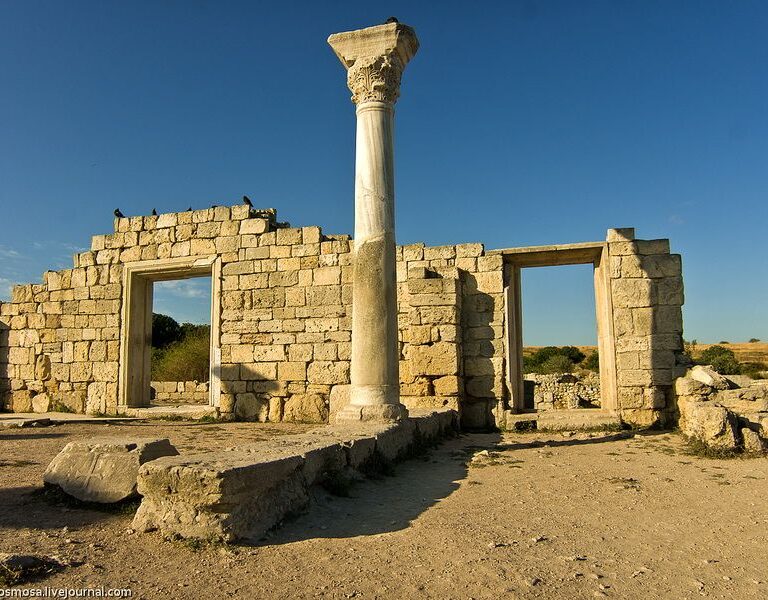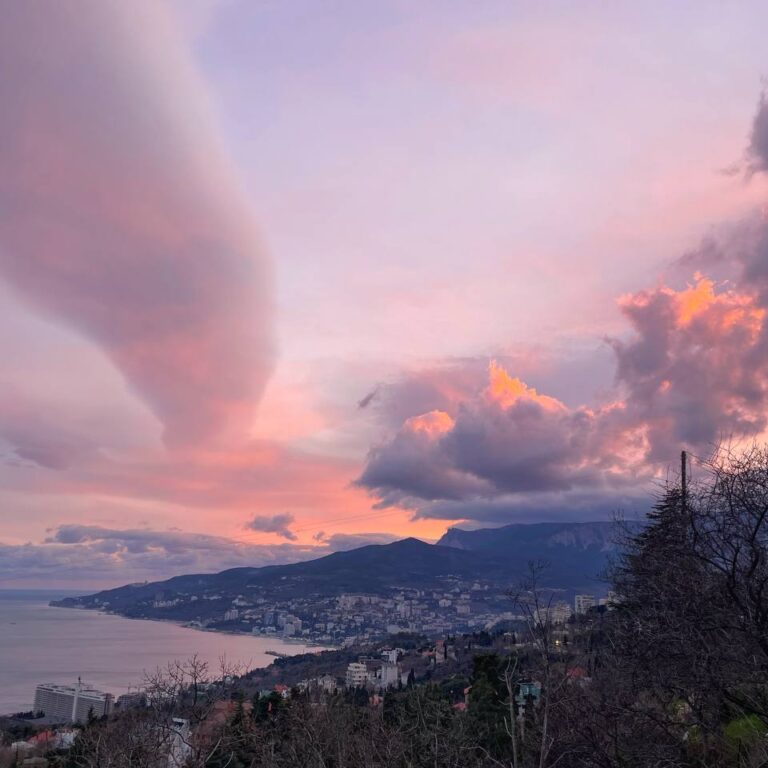One of the goals of the state policy to ensure the de-occupation of the temporarily occupied territory and its safe reintegration is the formation and implementation of policy in the legal, social and other spheres, as well as ensuring the right to the truth about the armed conflict. Decree of the President of Ukraine No. 117, which implemented the Strategy for Deoccupation and Reintegration of the Temporarily Occupied Territory of Crimea and the City of Sevastopol was adopted on March 24, 2021, 11 months before the beginning of the full-scale invasion of the Russian Federation, when cases of illegal burials of Russian military personnel on the territory occupied Crimea have not yet gained mass.
Accordingly, it was difficult for some to predict that the aggressor would begin to carry out mass criminal glorification in the Crimea of his soldiers who died on the territory of mainland Ukraine. However, now the problem is ripe and its solution requires the preparation of an appropriate legal field, the prospects of which have been researched by associate professor Andrii Chvaliuk, especially for the Association of Reintegration of Crimea.
The Law of Ukraine dated May 22, 2022 No. 2265–IX prohibits the popularization and glorification of the activities of terrorist state bodies and its employees, including military personnel. The Law does not distinguish between living and dead occupiers, so all cases of attempts to glorify the fallen soldiers of the aggressor are also prohibited.
In the previous article, we already analyzed the “law” “adopted” by the fake “parliament of Crimea” “on perpetuating the memory of those killed during the defense of the homeland in the territory of the republic of Crimea.” The “novella” of this worthless “law” is that the participants of the criminal “special military operation” were “equated” to “defenders of the motherland” and “obliged” fake “local self-government bodies” to criminally “install inscriptions and markings on military burials…, which should include a historical reference containing information about the events in honor of which the memorial structures and objects were established”, “in particular, QR codes, with the help of which the transition to information resources on the Internet is provided, containing a historical reference, video materials and other materials about the events that took place and about the specified persons.”
In addition to cemeteries, the occupiers use “memorial plaques” on houses, “educational institutions”, fences of public squares, etc., for attempts to criminally glorify those who died in Ukraine during the full-scale invasion of the Crimean residents. It is not known for certain how many Crimean inhabitants are fighting against Ukraine in the ranks of the Russian army. At the beginning of September last year, the fake “head of Crimea” Serhiy Aksyonov reported that 1.2 thousand Crimean “volunteers” had allegedly gone to the front. But how many of them went there as a result of criminal “mobilizations”, “drafts” and “contracts” from the aggressor, the occupying “power” does not publicly announce, as well as the exact number of dead.
There are serious reasons to believe that clearly not all the dead residents of Crimea, chosen by Kremlin ideologues to carry out the demonstrative “heroization” were “volunteers”. Many of them were simply thrown into the crucible of war against their own people. And since we cannot “trust” the information indicated on the “memorial boards” that constantly appear in all corners of the occupied peninsula, the documents collected by the law enforcement agencies of Ukraine, which have been properly documenting the facts of the participation of Crimean residents in military operations on the side of the occupiers for a long time, will come in handy. It is these documents that, in our opinion, can decide the fate of the fake “memorial objects” installed on the peninsula.
If a deceased person from among the inhabitants of the Crimea, to whom a “monument”, “commemorative plaque”, etc. is dedicated, voluntarily joined the ranks of the armed forces of the aggressor state, or committed international crimes, such a “monument” or other artificial “memorial object” must be demonstrably dismantled, including a possible change of burial places to prevent any glorification of obvious criminals.
If it turns out that a person became a victim of illegal “mobilization” carried out by the occupiers in the Crimea, then in the absence of evidence that this person committed war crimes, the “memorial object” may remain after deoccupation exclusively in the form of a burial marker based on the decision of a local body self-government or military administration on whose territory it is located. However, it is still necessary that the adoption of a decision on the arrangement of burials be preceded by an assessment by art critics, urbanists, and cultural experts regarding the impossibility of glorifying Russian aggression and minimizing the traumatic impact of burials on the consciousness of residents of the de-occupied territories. All parks, squares, alleys and other green spaces “named after” the fallen soldiers of the aggressor must change their name, as well as schools, desks in them, watercraft, streets, etc.
The issues that, in our opinion, must be raised at the meetings of the authorities when making a decision on arranging burials include: changing the inscription about the deceased, in accordance with the content of the established facts; dismantling from the “memorial object” burial symbols of the military invasion of the Russian Nazi totalitarian regime in Ukraine, the propaganda of which is prohibited by the Law of Ukraine of May 22, 2022 No. 2265-IX , as well as the St. George ribbon, the propaganda of which in Ukraine since 2017 an administrative offense.
A logical question arises as to who and how should identify and eliminate the numerous illegal elements of propaganda of the Russian regime and symbols of the Russian military invasion present in the de-occupied territories.
The first thing that comes to mind is the National Police of Ukraine. Sub-paragraphs 2, 3 and 4 of paragraph 1 of Article 23 of the Law of Ukraine “On the National Police” provide that “the police, in accordance with the tasks assigned to it, identifies the reasons and conditions that contribute to the commission of administrative offenses, takes measures within its competence to eliminate them; takes measures to detect administrative offenses; terminates discovered administrative offenses”. This activity is carried out by verbally expressing legal requirements or issuing a written order. Article 188-28 of the Code of Administrative Offenses provides for administrative liability for non-fulfillment of legal requirements by officials of authorized divisions of the National Police. However, the provision of this article covers prescriptions for the elimination of violations of rules, regulations and standards related to road safety. Therefore, it needs to be improved in cases where the policeman’s order will refer to the dismantling of St. George’s ribbon or other aggressor’s propaganda from the cemetery. Otherwise, in our opinion, this provision will not contribute to the termination of the offense and limits the preventive activities of the National Police.
According to the European Charter of Local Self-Government, which has been ratified by Ukraine, local self-government bodies, within the limits of the law, have the full right to freely resolve any issue that is not removed from their sphere of competence and the solution of which is not entrusted to any other body. And most importantly, they will control self-construction objects that are built without permits. That is, the most egregious illegal cases should be controlled and checked by local authorities.
During control, local self-government bodies will be able to issue binding orders, conduct inspections, including unscheduled inspections, etc. This will take place within the framework of constant and continuous monitoring of the development of the community. But, as People’s Deputy Olena Shulyak notes, such monitoring is not actually carried out in the territory under control, because “it is not defined as mandatory”.
In addition, it is obvious that in the de-occupied Crimea the competence of self-government bodies will be exercised for a long time by military administrations, whose powers of self-construction should be detailed in such a way as to make it impossible to groundlessly eliminate other self-construction that is not related to aggression and which has a socially useful function in the Crimea; as an example regarding the burials of Crimeans during the period of occupation, not related to Russian aggression. Not everything is so simple with monitoring objects. After all, the Law of Ukraine “On Improvement of Settlements”, although it refers to cemeteries as objects of improvement of settlements in Part 1 of Article 13, does not clarify what elements they consist of and whether it changes the automatically established “element of improvement”, in particular, a gravestone construction, legal status of the entire object.
They are now trying to correct the situation with the help of the draft law on the improvement of the field of burial dated February 4, 2022 No. 7018, in which the “burial facility” is defined as an element of landscaping. The adoption of this draft law would increase the list of state control bodies that have the right to issue prescriptions regarding illegally installed objects (elements) of improvement, but it also does not reflect the specifics of the reintegration situation. Local executive bodies of Ukraine now have the right to adopt their own rules regarding the requirements for improvement of their territory, which are approved by the decisions of the relevant councils. According to these rules, they have the right to issue prescriptions – written requirements of an authorized person to eliminate a violation of the rules, which must be fulfilled within a specified time. The improvement object, the dismantling of which has been ordered, must be dismantled in the shortest possible time, up to 3 days, at his own expense by the person who carried out its placement [10].
In our case, the circle of people who actually installed burial structures or “memorial structures” outside the cemetery or on it is specific, since a significant part of the criminal “glorification” is committed not by relatives, but by collaborators and occupiers, who after deoccupation are at least guaranteed no ” practical powers” will not have, and as natural persons will be obvious participants in criminal proceedings, including in absentia, and therefore entrusting them with the corresponding duty of dismantling will be known to be ineffective.
In accordance with Ukrainian legislation, in case of non-fulfillment of the order within the specified period, the authorized person who issued the order has the right to draw up a protocol on an administrative offense under Article 152 of the Code of Ukraine on administrative offenses regarding violation of state standards, norms and rules in the field of improvement of settlements, rules of improvement of territories. If the person against whom the order was issued did not dismantle it within the time limit set in the order, the relevant structures of state administrations take measures to dismantle the arbitrarily placed (installed) improvement element. Similarly, in our opinion, these bodies, namely military administrations, should act in the occupied Crimea and in the case of impossibility to establish the actual initiator or “owner” of the “improvement element” or impossibility to force it to be dismantled.
In such a situation, the text of the prescription, without specifying the specific person-executor, should be published in the local media. After the expiration of three days from the moment of publication of the order, local executive authorities may begin the forced dismantling of an arbitrarily placed or installed “improvement element”.
Therefore, it should be stated that the local state executive authorities have certain powers to deal with the consequences of the criminal “glorification” of the fallen servicemen of the aggressor. The domestic law-making process is also moving in the right direction, albeit slowly. We hope that the current powers of the National Police will eventually be strengthened by appropriate administrative sanctions.
In conclusion, it should be noted that the development and implementation of commemorative practices should become the prerogative of the state. Moreover, in advance, otherwise, the Ukrainian authorities in the de-occupied territories, in the absence of measures or separate instructions properly prescribed in the strategy for the restoration of the de-occupied territories, can take initiative to fulfill the general prescriptions of the law, and simply remove not only the “memorial objects” created by the occupiers themselves, but also information about them, which will have both relevant procedural and sometimes, regarding the establishment and arrangement of the burial place, and humanitarian and sanitary-epidemic significance. This is especially relevant when simulating the destruction of such information about burials and “memorial buildings” by the occupiers themselves during the deoccupation.
The possibility of cases of quite understandable initiatives on the part of the local population outraged by the Russian occupation, which can also lead to the destruction of the “memorial object” and the complication of the subsequent humanitarian, administrative and criminal process regarding burials, should not be dismissed. Therefore, during the de-occupation, the population should be informed in advance about the quick and effective procedures for countering the glorification of the aggressor and about arranging burials, which will be carried out by the Ukrainian authorities.







